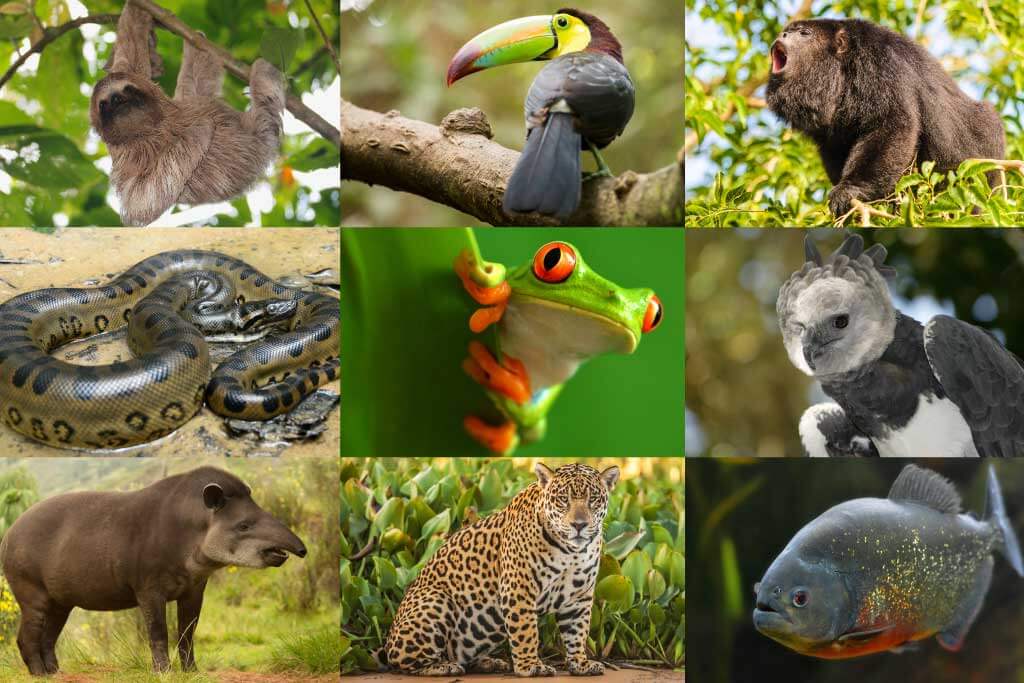In everyday language, a forest is a piece of land that houses different species of plants and animals. But, what is its definition in scientific terms? A forest is a complex ecosystem, with trees as the predominant life form. Tropical rainforests are one such type of forest. The regions around the equator are dense in such forests, which are a part of the subtropical forest biome.
In this article, we are going to talk about tropical rainforests, as well as their ecosystems and other specifications they have.
What are Tropical Rainforests?
Many different types of forests exist on this planet, such as tropical deciduous forests, temperate evergreen forests, temperate deciduous forests etc, with tropical rainforests being one of them. These forests occur in areas having a tropical climate that see heavy rainfall throughout the year. Furthermore, these forests are abundant with many species of wildlife and vegetation, being home to some 50 to 70 per cent of all life forms on our planet.
Moreover, these woods are known to cover about two per cent of the entire Earth’s surface, with the Amazon forest being the largest tropical rain forest. Some of the main characteristics of these forests are:
- They are very wet with over 2,000 mm of rainfall per year.
- They are very warm with an average daily temperature of 28°C. Furthermore, the temperature never drops below 20°C and rarely exceeds 35°C.
- The atmosphere is hot and humid.
- The climate is consistent all year round.

Tropical rainforests can prove to be very intriguing. So, here is a video that ventures into some fascinating facts about tropical woods.
Regions of Origin
Tropical rainforests are located in three main regions of our planet:
- The Malesian botanical subkingdom, which extends from Myanmar (Burma) to Fiji and includes the whole of Thailand, Malaysia, Indonesia, the Philippines, Papua New Guinea, the Solomon Islands, Vanuatu, parts of Indochina as well as tropical Australia
- Tropical South and Central America, especially the Amazon basin
- West and Central Africa
The retreat of the rainforests was particularly rapid during the period beginning 5,000,000 years ago leading up to, and including the Pleistocene Ice Ages, or glacial intervals, that occurred between 2,600,000 and 11,700 years ago.
Flora
Flora is defined as all the plants that naturally occur in a particular region or time. Sometimes, microorganisms like bacteria and fungi can also be referred to as flora, as in the terms gut flora or skin flora. Orchids, Philodendrons, Ferns, Bromeliads, Kapok Trees, Banana Trees, Rubber Trees, Bamboo, Trees, Cassava Trees and Avocado Trees, make up the flora of the tropical rainforests.

Fauna
Fauna can be defined as the animals that are native to a particular region or time. As mentioned above, the corresponding term for plants is known as flora. The tropical rainforests’ fauna is rich in some rare species of big and small animals including jaguars, bats, snakes, frogs etc. Furthermore, the Amazon tropical rainforest houses some beautiful birds and colourful toads, that one can’t even imagine seeing in real life.

Benefits of Tropical Rainforests
These rainforests have 3 primary benefits. They are as follows:
- Offer biodiversity elements: These forests support four distinct environments that are essential for a large variety of species. Firstly, there is the forest floor covered in nutrient-rich leaf litter. Then, there is the understory which includes the space beneath the high branches, the canopy. Thirdly, there is the tree top where birds forage. Lastly, there is the emergent layer which refers to the tall trees above the canopy.
- Medicine: Rainforests are home to hundreds of plant species that people may use to create medications for migraines, cancer, fevers, malaria as well as muscle problems.
- Water supply: These forests also play an important role in the Earth’s water cycle, via the process of precipitation and transpiration. In addition, they are a large source of freshwater .
Some Interesting Tidbits About Tropical Rainforests
Mentioned below are some fun facts that you would like to know about tropical rainforests:
- Rainforests are a powerful natural climate solution and help in keeping everything in place.
- They are home to more than half our planet’s terrestorial animal species.
- These forests have become net carbon emitters.
- A swath of rainforests, about the size of 40 football fields, disappears each minute.
- A majority of the global population earn their livelyhood from the different resources of rainforests located on this planet.
- These forests help regulate temperature arround the world. Additionally, they help stabilise ocean currents, wind patterns, and rainfall patterns.
- The world’s tropical rainforests contains more of than 70 per cent of the plants used to cure cancer.
Now that you have read a lot about the tropical rainforests, it is time to delve deeper into the beauty of these forests through this amazing video.
Final Thoughts
Rainforests are called the lungs of the planet because of the amount of oxygen they produce and the life they offer. However, they are a lot more than that. Through this article, you now have a better understanding of the many benefits of these forests as well as about a few of the lesser-known species of animals and plants existing there.

